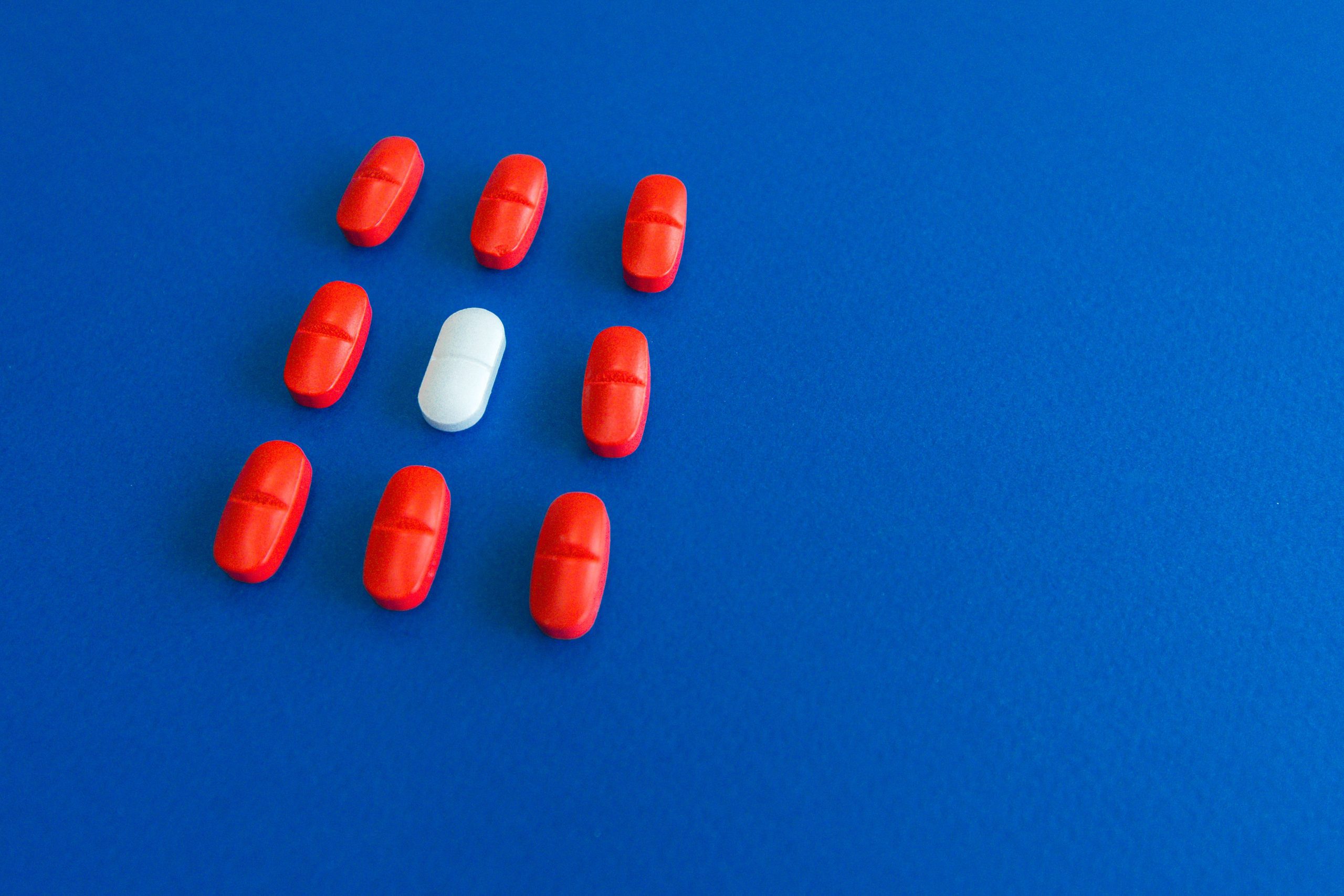
- What Is Pseudoephedrine?
- Brief History of Pseudoephedrine
- How to Use Pseudoephedrine?
- What Should Be Done If an Overdose Occurs?
- To Whom Is It Contraindicated?
- Interactions with Other Medications
- Available Forms
- Famous Pseudoephedrine Brands
- Why Do People Use It In Sports?
- Websites and Articles to Delve into the Benefits of Pseudoephedrine
- Disclaimer
What Is Pseudoephedrine?
Pseudoephedrine is a sympathomimetic drug commonly used as a nasal decongestant. It works by narrowing the blood vessels in the nasal passages, reducing congestion and making it easier to breathe. Often found in over-the-counter cold and allergy medications, pseudoephedrine is a key ingredient due to its ability to alleviate symptoms associated with nasal congestion, sinus pressure, and hay fever.
As a member of the sympathomimetic class, pseudoephedrine closely resembles the effects of the sympathetic nervous system, which is responsible for the “fight or flight” response. However, it is essential to note that pseudoephedrine has potential side effects, including increased heart rate and elevated blood pressure. Due to its use in the illicit production of methamphetamine, many regions regulate its sale, often requiring purchasers to provide identification and limiting the quantity that can be bought at one time.
Individuals with certain medical conditions, such as hypertension or heart problems, should exercise caution when using products containing pseudoephedrine. It is advisable to consult with a healthcare professional before incorporating pseudoephedrine-containing medications into one’s regimen to ensure safety and suitability based on individual health considerations.
Brief History of Pseudoephedrine
Pseudoephedrine has a history that dates back to the mid-20th century. Here’s a brief overview:
- Discovery and Development:
- Pseudoephedrine, chemically known as (S)-(+)-pseudoephedrine, is a sympathomimetic drug derived from ephedrine.
- Ephedrine, the parent compound, was first isolated from the plant Ephedra sinica in 1885 by Japanese chemists.
- Pseudoephedrine was later synthesized as a decongestant and bronchodilator in the 1920s.
- Medical Use:
- Pseudoephedrine gained popularity for its nasal decongestant properties and its ability to alleviate symptoms of respiratory conditions like nasal congestion due to allergies or the common cold.
- Over the years, pseudoephedrine became a common ingredient in various over-the-counter cold and allergy medications.
- Regulation and Concerns:
- Pseudoephedrine, along with ephedrine, became a subject of regulatory concern due to its potential use in the illicit production of methamphetamine, a powerful stimulant and controlled substance.
- Many countries implemented regulations on the sale of pseudoephedrine-containing products, including placing them behind pharmacy counters, limiting quantities, and requiring customer identification for purchase.
- Anti-Doping Regulations:
- Pseudoephedrine is listed as a specified stimulant on the World Anti-Doping Agency’s (WADA) Prohibited List, indicating its potential misuse for performance enhancement.
- Athletes are subject to anti-doping regulations that prohibit the use of pseudoephedrine above specified thresholds during competition.
- Pharmaceutical Evolution:
- Due to concerns about the illicit use of pseudoephedrine in methamphetamine production, some pharmaceutical manufacturers developed alternative formulations that are less prone to diversion for illicit purposes.
- Combination products, such as those containing pseudoephedrine and acetaminophen or ibuprofen, became more prevalent.
Here’s a summarized history of pseudoephedrine presented in a table format:
| Year | Event |
|---|---|
| 1885 | Ephedrine isolated from Ephedra sinica plant. |
| 1920s | Pseudoephedrine synthesized as a decongestant. |
| 20th c. | Pseudoephedrine becomes a popular nasal decongestant. |
| 1970s | Ephedrine and pseudoephedrine face regulatory scrutiny due to methamphetamine production concerns. |
| 21st c. | Regulations implemented on pseudoephedrine sales; behind-the-counter placement, quantity limits, and customer identification. |
| Current | Pseudoephedrine remains a common decongestant; alternative formulations developed to reduce misuse. Listed as a specified stimulant on WADA’s Prohibited List. |
How to Use Pseudoephedrine?
When using pseudoephedrine, it is important to follow the recommended guidelines and consult with a healthcare professional if you have any underlying health conditions. Here’s a general guide on how to use pseudoephedrine:
- Read the Label:
- Carefully read the product label and packaging of the medication containing pseudoephedrine. Different formulations may have varying dosages and instructions.
- Dosage Instructions:
- Follow the recommended dosage instructions provided on the packaging or as directed by your healthcare provider. Do not exceed the recommended dose, as doing so can lead to potential side effects.
- Take with Water:
- Swallow the pseudoephedrine tablets or capsules whole with a full glass of water. Do not crush, chew, or break the tablets unless directed to do so by a healthcare professional.
- Timing:
- Take the medication as directed, and adhere to the recommended dosing schedule. Pseudoephedrine is often taken every 4 to 6 hours, but this can vary depending on the specific product.
- Food Interaction:
- Pseudoephedrine can be taken with or without food. However, taking it with a meal may help minimize potential stomach upset.
- Stay Hydrated:
- It is important to stay well-hydrated while using pseudoephedrine. Drinking plenty of water can help prevent dehydration, especially if the medication causes increased perspiration.
- Avoid Certain Medications:
- Inform your healthcare provider about all the medications you are currently taking, including prescription and over-the-counter drugs. Some medications may interact with pseudoephedrine, and your healthcare provider can provide guidance on potential drug interactions.
- Monitor Side Effects:
- Be aware of potential side effects, such as increased heart rate, nervousness, or insomnia. If you experience severe or persistent side effects, contact your healthcare provider.
- Limit Use:
- Pseudoephedrine is generally recommended for short-term use. If symptoms persist, or if you need to use the medication for an extended period, consult with a healthcare professional.
Remember, this information is general guidance, and it’s crucial to consult with a healthcare professional or pharmacist for personalized advice based on your specific health conditions and medication history.
What Should Be Done If an Overdose Occurs?
If you suspect an overdose of pseudoephedrine or any medication containing it, it is crucial to seek immediate medical attention. Overdosing on pseudoephedrine can lead to serious health complications. Here are the steps to take in case of a suspected overdose:
- Call Emergency Services:
- Dial emergency services (e.g., 911 in the United States) immediately if you suspect an overdose. Provide them with as much information as possible, including the name of the medication, the dosage taken, and any symptoms the person may be experiencing.
- Do Not Wait:
- Time is critical in the case of a potential overdose. Do not wait for symptoms to worsen before seeking help.
- Provide Information:
- If possible, provide emergency responders with details about the individual’s age, weight, medical history, and any other medications they may be taking.
- Contact Poison Control Center:
- In addition to calling emergency services, contact your local poison control center. Poison control professionals can provide guidance on immediate first aid measures and further steps to take.
- Do Not Attempt Self-Treatment:
- Do not attempt to induce vomiting or administer any home remedies without professional guidance. This can sometimes worsen the situation.
- Monitor Vital Signs:
- While waiting for emergency responders, monitor the person’s vital signs (such as breathing and consciousness) and provide any necessary first aid, such as CPR, if the person becomes unresponsive.
- Bring Medication Packaging:
- If possible, bring the medication packaging or any relevant information to the emergency room. This can help healthcare providers determine the exact substance ingested and provide appropriate treatment.
Remember, pseudoephedrine overdose can lead to symptoms such as increased heart rate, elevated blood pressure, hallucinations, seizures, and more. Prompt medical attention is essential to manage these symptoms and prevent serious complications. Never hesitate to seek professional help in the case of a suspected overdose.
To Whom Is It Contraindicated?
Pseudoephedrine, a nasal decongestant, is contraindicated in certain individuals due to the potential for adverse effects and interactions with pre-existing medical conditions. It is important to consult with a healthcare professional before using products containing pseudoephedrine, especially if you fall into one or more of the following categories:
- Hypertension (High Blood Pressure):
- Pseudoephedrine can increase blood pressure and heart rate. Individuals with hypertension or other cardiovascular conditions may be advised to avoid pseudoephedrine-containing products or use them under strict medical supervision.
- Heart Conditions:
- Individuals with a history of heart disease, angina, arrhythmias, or other cardiovascular issues should exercise caution when using pseudoephedrine. The drug can stimulate the heart and may exacerbate underlying heart conditions.
- Thyroid Disorders:
- Pseudoephedrine can affect thyroid function, and individuals with hyperthyroidism (overactive thyroid) may be advised to avoid its use.
- Glaucoma:
- Pseudoephedrine can increase intraocular pressure, potentially worsening symptoms in individuals with glaucoma. It is generally contraindicated in people with narrow-angle glaucoma.
- Prostate Conditions:
- Men with benign prostatic hyperplasia (BPH) or other prostate conditions may experience urinary retention or worsening symptoms due to the effects of pseudoephedrine on smooth muscle, and caution is advised.
- Severe Kidney Disease:
- Pseudoephedrine is excreted by the kidneys, and individuals with severe kidney impairment may need dosage adjustments or may be advised to avoid the drug altogether.
- Diabetes:
- Pseudoephedrine can affect blood sugar levels and may require monitoring in individuals with diabetes. Consultation with a healthcare professional is recommended for those with diabetes before using products containing pseudoephedrine.
- Allergies or Sensitivity:
- Individuals with known allergies or hypersensitivity to pseudoephedrine or related sympathomimetic drugs should avoid its use.
- Pregnancy and Breastfeeding:
- The safety of pseudoephedrine during pregnancy and breastfeeding is not well established. Pregnant or breastfeeding individuals should consult with a healthcare professional before using products containing pseudoephedrine.
Always inform your healthcare provider about your medical history, current medications, and any existing health conditions before using pseudoephedrine-containing products. Individual responses to medications can vary, and professional guidance is essential to ensure safety and effectiveness.
Interactions with Other Medications
Pseudoephedrine, being a sympathomimetic drug, can interact with various medications. It’s important to inform your healthcare provider about all the medications, supplements, and herbal products you are taking to avoid potential interactions. Here are some common classes of medications that may interact with pseudoephedrine:
- Monoamine Oxidase Inhibitors (MAOIs):
- The combination of pseudoephedrine with MAOIs, a class of antidepressants, can lead to a dangerous increase in blood pressure. This combination should be avoided.
- Sympathomimetic Medications:
- Combining pseudoephedrine with other sympathomimetic drugs, such as decongestants or stimulant medications, may result in additive effects, including increased heart rate and blood pressure.
- Beta-Blockers:
- Beta-blockers, often prescribed for heart conditions and hypertension, may reduce the effectiveness of pseudoephedrine and its decongestant effects.
- Antihypertensive Medications:
- Pseudoephedrine can counteract the effects of antihypertensive medications, potentially leading to elevated blood pressure. This interaction should be monitored by a healthcare professional.
- Antidepressants:
- Tricyclic antidepressants and other medications that affect serotonin levels may have an increased risk of serotonin syndrome when combined with pseudoephedrine.
- Antacids and Acid Suppressants:
- Some antacids and acid-suppressing medications can increase the absorption of pseudoephedrine, leading to an increased risk of side effects. It’s advisable to separate the administration of these medications.
- Diuretics:
- Diuretics, commonly used to treat conditions like hypertension and edema, may enhance the risk of pseudoephedrine-related cardiovascular effects.
- Caffeine:
- Combining pseudoephedrine with high doses of caffeine or other stimulants may increase the risk of nervousness, restlessness, and increased heart rate.
- Lithium:
- Pseudoephedrine may decrease the excretion of lithium, potentially leading to increased lithium levels and toxicity.
Always consult with your healthcare provider or pharmacist before using pseudoephedrine alongside any other medications. They can provide personalized advice based on your medical history and current medication regimen, helping to minimize the risk of adverse interactions. If you experience any unexpected side effects or reactions, seek medical attention promptly.
Available Forms
Pseudoephedrine is commonly available in various forms, and the specific formulations may vary between brands and regions. Some of the common forms in which pseudoephedrine is available include:
- Oral Tablets or Capsules:
- Pseudoephedrine is frequently found in the form of oral tablets or capsules. These are taken by mouth with water and typically provide extended relief over several hours.
- Extended-Release Tablets or Capsules:
- Extended-release formulations of pseudoephedrine are designed to release the medication gradually over an extended period, providing longer-lasting relief and reducing the need for frequent dosing.
- Liquid Syrups:
- Some medications containing pseudoephedrine are available in liquid form, often as a syrup. This form may be suitable for individuals who have difficulty swallowing tablets or capsules.
- Dissolvable Tablets:
- Pseudoephedrine may be available in dissolvable or effervescent tablet forms. These tablets dissolve in water before being consumed.
- Combination Products:
- Pseudoephedrine is commonly combined with other active ingredients to create over-the-counter cold and allergy medications. These combinations may include antihistamines, analgesics (pain relievers), cough suppressants, or expectorants.
It’s important to note that the availability of pseudoephedrine-containing products can be subject to regulations, especially due to concerns about its potential use in the illicit production of methamphetamine. In some regions, these products may be kept behind the pharmacy counter, and purchasers may need to provide identification and adhere to purchase quantity limits.
When considering the use of pseudoephedrine, it’s crucial to read the product labels carefully, follow dosage instructions, and consult with a healthcare professional if you have any questions or concerns. Additionally, be aware of the potential for interactions with other medications, and inform your healthcare provider about all the medications you are currently taking.
Famous Pseudoephedrine Brands
Pseudoephedrine is a common ingredient in various over-the-counter cold and allergy medications. It’s often found under different brand names, and the specific formulations may vary. Here are some well-known brand names that may include pseudoephedrine in their products:
- Sudafed:
- Sudafed is one of the most recognized brands that includes pseudoephedrine as its active ingredient. Sudafed products are available in various formulations, including tablets, extended-release tablets, and nasal decongestant liquids.
- Claritin-D:
- Claritin-D is a combination medication that includes the antihistamine loratadine and pseudoephedrine. It is used to relieve symptoms of allergies and nasal congestion.
- Allegra-D:
- Similar to Claritin-D, Allegra-D combines the antihistamine fexofenadine with pseudoephedrine. It is used for the treatment of seasonal allergic rhinitis and nasal congestion.
- Zyrtec-D:
- Zyrtec-D is another combination product that includes the antihistamine cetirizine and pseudoephedrine. It is designed to provide relief from allergy symptoms and nasal congestion.
- Advil Cold and Sinus:
- Some formulations of Advil Cold and Sinus include pseudoephedrine alongside ibuprofen, a nonsteroidal anti-inflammatory drug (NSAID).
- Mucinex D:
- Mucinex D is a combination medication containing guaifenesin (an expectorant) and pseudoephedrine. It is used to relieve chest congestion and nasal congestion.
It’s important to note that product formulations may change, and new products may be introduced to the market. Additionally, regulations regarding the sale of pseudoephedrine-containing products vary by region, and some products may only be available behind the pharmacy counter.
Always read the product label for the active ingredients and follow the recommended dosage instructions. If you have specific health concerns or questions about medications containing pseudoephedrine, it’s advisable to consult with a healthcare professional or pharmacist.
Why Do People Use It In Sports?
Pseudoephedrine is sometimes used in sports for its potential performance-enhancing effects, particularly its ability to act as a bronchodilator and nasal decongestant. Athletes may use pseudoephedrine to alleviate nasal congestion and improve respiratory function. Here are some reasons why athletes might consider using pseudoephedrine:
- Nasal Decongestion:
- Pseudoephedrine can help alleviate nasal congestion, which may be beneficial for athletes engaging in endurance sports or activities that require optimal respiratory function.
- Improved Breathing:
- As a bronchodilator, pseudoephedrine can widen the airways in the lungs, potentially enhancing airflow and oxygen exchange. This effect may be of interest to athletes seeking improved respiratory efficiency.
- Increased Alertness:
- Pseudoephedrine is a sympathomimetic drug, which means it can stimulate the sympathetic nervous system. This stimulation may lead to increased alertness and reduced perception of fatigue, potentially benefiting athletes during competition.
It’s important to note that the use of pseudoephedrine in sports is controversial, and its use is subject to anti-doping regulations. Pseudoephedrine is included on the World Anti-Doping Agency’s (WADA) Prohibited List as a specified stimulant, meaning its use is prohibited in competition. Athletes who test positive for pseudoephedrine above a certain threshold may face sanctions, including disqualification and suspension.
The inclusion of pseudoephedrine on the Prohibited List is primarily due to its potential stimulant properties and the risk of abuse for performance enhancement. Athletes are responsible for ensuring that any medication they use complies with anti-doping regulations, and they should be aware of the specific rules and thresholds set by the relevant sports organizations.
It’s important for athletes to consult with their team physicians, healthcare providers, or anti-doping experts to ensure that any medication they use is within the allowed limits and does not violate anti-doping regulations. Misuse of pseudoephedrine or any other prohibited substances can have serious consequences for an athlete’s career and reputation.
Websites and Articles to Delve into the Benefits of Pseudoephedrine
The websites and articles you’ve provided cover a range of reputable sources where you can delve into the benefits, uses, indications, and potential adverse effects of pseudoephedrine. Here’s a brief description of each source:
- Wikipedia – Pseudoephedrine:
- Wikipedia provides an overview of pseudoephedrine, including its pharmacology, uses, and regulatory status.
- MedlinePlus – Pseudoephedrine:
- MedlinePlus offers drug information, including uses, precautions, and side effects, providing a comprehensive overview for consumers.
- NHS – Pseudoephedrine:
- The National Health Service (NHS) provides information on the uses and considerations for pseudoephedrine.
- Drugs.com – Pseudoephedrine:
- Drugs.com offers comprehensive information on pseudoephedrine, including its uses, dosage, side effects, and interactions.
- WebMD – Pseudoephedrine Oral:
- WebMD provides detailed information on the oral use of pseudoephedrine, including its sustained-release formulations.
- Mayo Clinic – Pseudoephedrine Oral Route:
- Mayo Clinic discusses the potential side effects of pseudoephedrine, helping users make informed decisions about its use.
- Cleveland Clinic – Pseudoephedrine Capsules and Tablets:
- The Cleveland Clinic provides information on pseudoephedrine capsules and tablets, focusing on its health impact.
- Tylenol – What Is Pseudoephedrine:
- Tylenol’s website offers insights into what pseudoephedrine is and how it is used in combination with other medications.
- GoodRx – What Is Pseudoephedrine: GoodRx provides information on pseudoephedrine, covering its uses and potential cost-saving measures.
- American Addiction Centers – Over-the-Counter Medications: Pseudoephedrine:
- This source discusses pseudoephedrine in the context of over-the-counter medications and potential concerns related to misuse.
- Pharmacy Times – Pseudoephedrine: Uses, Indications, and Adverse Effects:
- Pharmacy Times offers insights into the uses, indications, and potential adverse effects of pseudoephedrine.
- WebMD – Sudafed Oral:
- WebMD provides specific details about Sudafed Oral, a medication containing pseudoephedrine, including its uses and potential interactions.
These sources collectively offer a comprehensive understanding of pseudoephedrine from various reputable perspectives. Always consult with healthcare professionals for personalized advice and information tailored to individual health needs.
Disclaimer
The information is solely provided for educational purposes. It is not intended to diagnose, treat, cure, or prevent any disease. Seek the advice of your physician or qualified healthcare provider with any questions you may have regarding a medical condition at all times. Never disregard professional medical advice because of something you have read or learned from this article.






